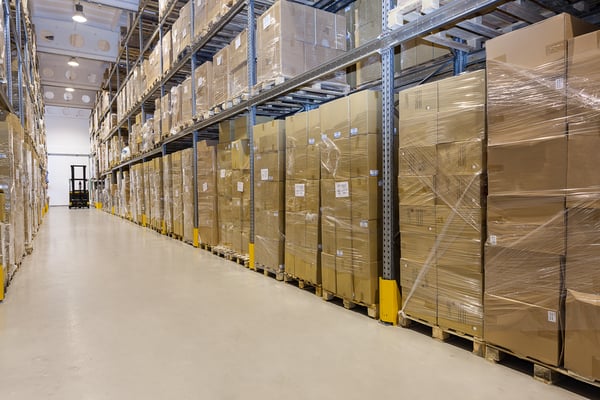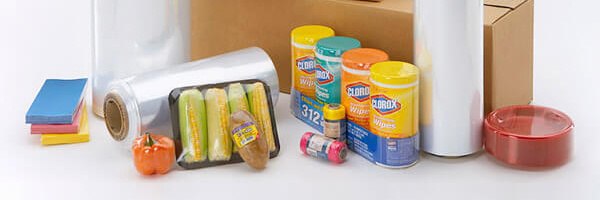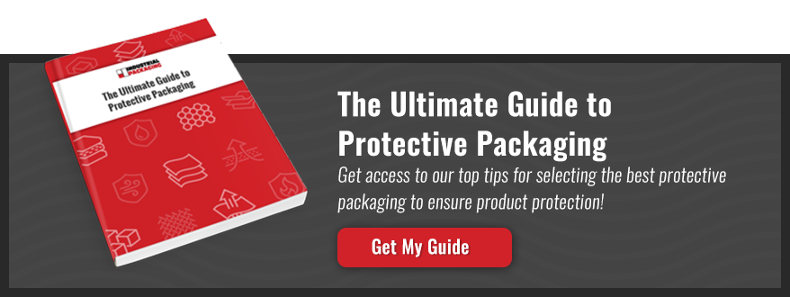What Is Protective Packaging? Definition, Types, And Uses
Packaging Materials | Environment | Packaging Design | Air Pillows | Shipping Protection | Packaging Psychology
At Industrial Packaging we have been offering protective packaging supplies for close to 70 years. Now, while you have probably heard the term "protective packaging" before, you may be wondering, what exactly is it? In the article below, we will define and explore protective packaging materials and the various applications of which are most common for this type of packaging supply.
What Does Protective Packaging Mean?
Simply stated, protective packaging supplies are materials built to protect and buffer a product from potential harm or destruction during shipping or warehousing. Technically speaking, protective packaging may be made from any material including but not limited to cardboard, plastic, metal, and etc.
Protective packaging is often used as the main component of a product's packaging or as a secondary form of packaging supply depending upon the product contained within. It is useful for various applications, however, all forms of protective packaging are created for the same purpose: ensuring that a product arrives in pristine condition without damage or related problems.
Examples of materials that would be considered protective packaging include but are not limited to; flexible films, bagging, shrink packaging, carded packaging (blister packs, skin packs, clamshells), shipping protection (air pillows) and etc.
Need Help Choosing The Right Protective Packaging?
Why Use Protective Packaging?
1. The Unboxing Experience
The unboxing experience has become an exponentially more important dynamic for consumers. Social influencers use media outlets like YouTube to prime consumers for the unboxing experience as an ever more exciting endeavor to engage with.
In 2020 about 40% of all consumers will take a photo or video of their products and the unboxing experience if they feel it is warranted. This results in massive social sharing, virality and what can ultimately equate to free advertising and marketing on a massive scale.
Protective packaging ensures that this aspect of the buyer's journey is filled with excitement, tension and if all goes right, a sense of joy. Using the appropriate protective packaging greatly increases the probability of a quality unboxing experience. Your package is more likely to survive the rigors of transportation, warehousing and the delivery service of choice.

2. Superior Product Deliverance
Ignore the banjo music... In this respect when we talk about deliverance we mean in the literal sense of proclamation. When your package arrives to an expecting consumer, protective packaging allows for your product to yell "I have arrived" without the excitement being squashed by damaged goods.
The first impression made on a consumer, particularly in regard to those who are shopping online rests squarely on the appearance of the package upon arrival to their doorstep. Pass this first phase of consumption and you will be well on your way to making a happy customer.
In fact, optimizing your packaging to the demands and expectations of your consumers can increase the likelihood of making them a lifetime customer. Protective packaging can help this moment be a positive one for both the consumer and the brand/company.
3. Environmentally Friendly
Since 2017, the trend of biodegradable flexible packaging materials and a consumer emphasis on buying "green" has consistently grown year over year. Features like plant-based polymers and biodegradable materials have proven to be a focal point of companies and consumers alike.
Your local packaging professional should be able to help you navigate the ever-growing eco-conscious consumer base. They know the packaging applications that are recyclable, earth-friendly, (plant or bio-polymer based), sustainable, and/or bio-compostable or biodegradable.
Bio-plastic alternatives to traditional plastic packaging and films are starting to become more accessible with plant-based substrates such as Nature Star (made from rice compounds) or Nurel. These are bio-polymer based alternatives that are becoming a viable shrink film alternative. While these items still carry a higher price tag, eventually, consumer demand and technological advancements in these material formulations should render the higher cost moot.

What Are Some Types Of Protective Packaging And Who Uses Them?
From epic e-com monoliths like Amazon to your local mom and pop shop slinging products on eBay, protective packaging is a nearly universal type of packaging in our modern age. Considering the benefits listed above in addition to these material's lower carbon footprint and cost, it is no surprise that protective flexible packaging materials are being widely adopted by businesses of all kinds, especially food manufactures, pharmaceutical companies, and producers of holistic and naturopathic products.
Whether its a collectible item being coddled by air pillows, or electronics wrapped in plastic films to prevent the invasion of moisture, protective packaging has a nearly endless list of applications, many of which, businesses of any size can afford to implement.
Air pillows are currently one of the most common choices in protective packaging. In recent years, they have replaced packaging peanuts (the small styrofoam pieces which resemble the aforementioned legume) on packaging lines all over the world. This is due to the fact that they are more affordable, produce much less waste and are easier to store than packaging peanuts.
Other Dynamics Of Protective Packaging
The endgame of protective packaging is the protection and preservation of the quality and integrity of the products contained within their materials. There are multiple variations in available materials including sustainable/earth-friendly options, and aesthetically pleasing offerings such as printed shrink film. With so many options available it's easy to see how protective packaging has far more to offer than just preventing damage to your products.
And in a world where package theft is becoming an increasingly major issue, we may very well see more manifestations of protective packaging that not only protect the contents of the package, but also rebuke those who would attempt to steal them...
Choosing The Right Protective Packaging For Your Business
If you are unsure of which type of protective packaging materials are right for your business, we recommend downloading our free Ultimate Guide To Protective Packaging. If you need assistance in sourcing the right protective packaging materials for your products, feel free to contact one of our packaging professionals for further information.
About Nathan Dube
As the Digital Marketing Specialist at Industrial Packaging, I am honored to create content for such a phenomenal company and work with one of the greatest teams in the Packaging Industry. Whether creating a video, writing blog posts or generating other pieces of content and multimedia, I am always excited to help educate and inspire our prospects and clients to reach their highest potential in regards to their packaging processes and needs.




